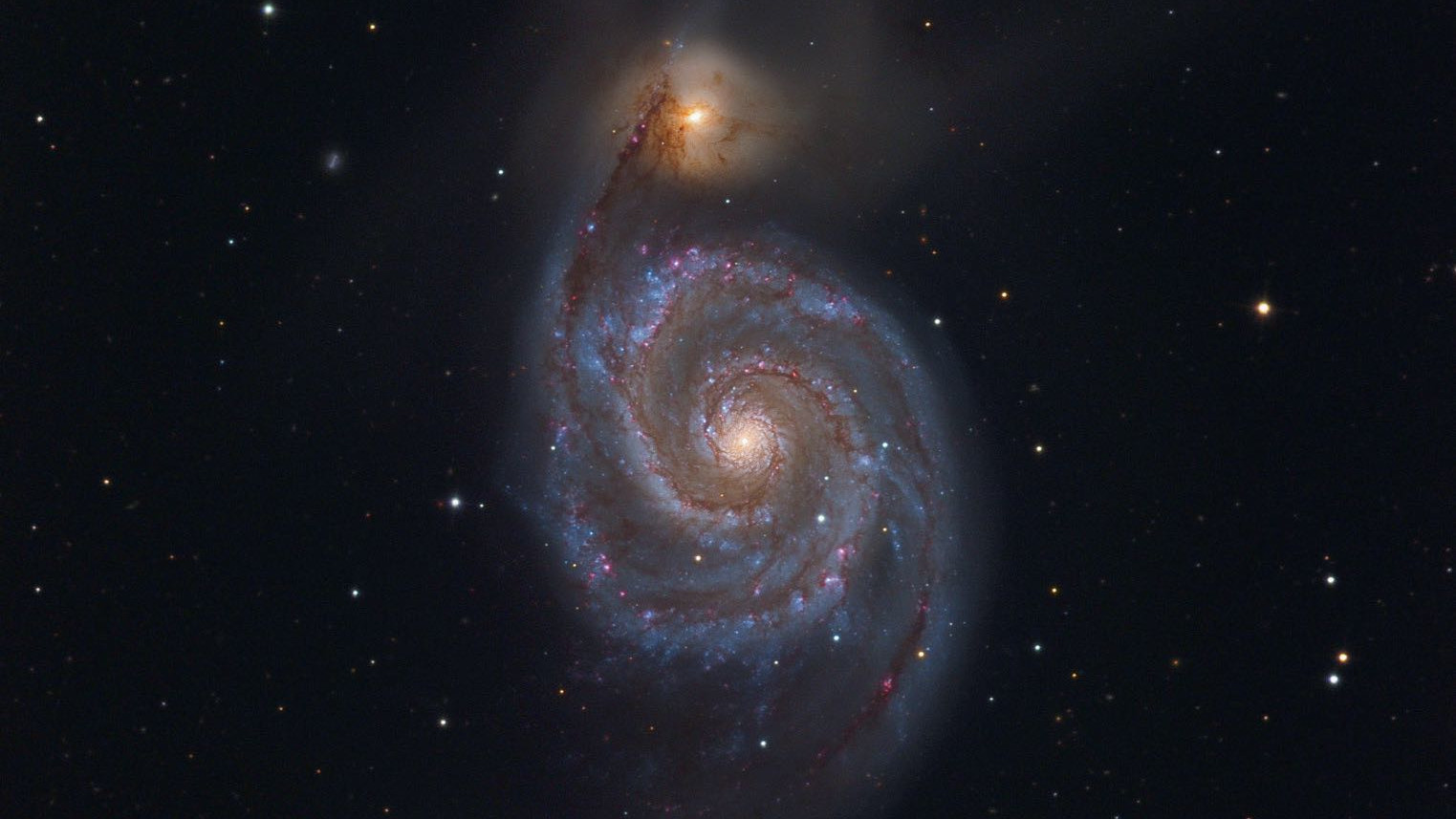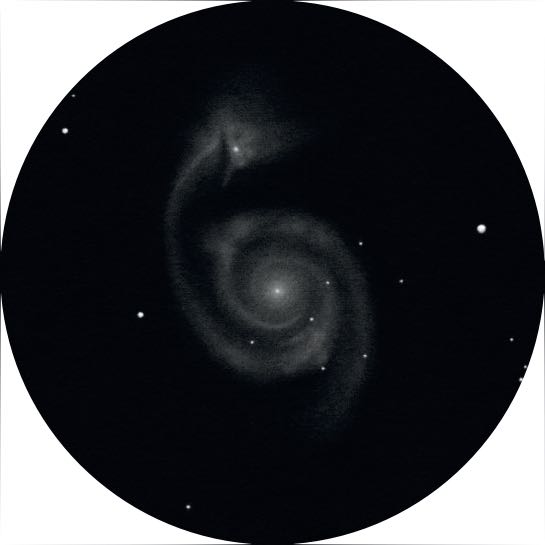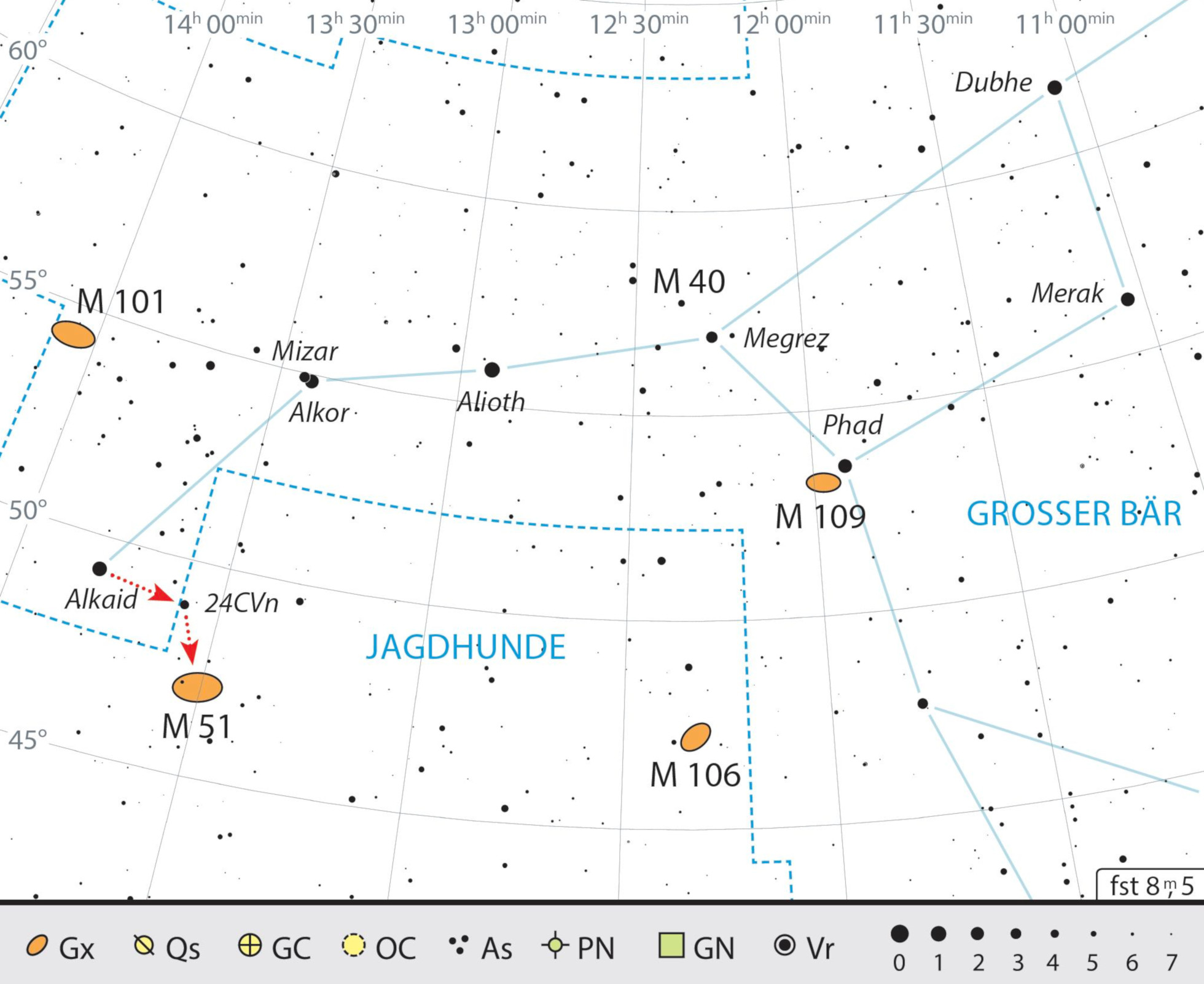M51 - the Whirlpool Galaxy
The M51 galaxy in the constellation of Canes Venatici is one of the most impressive galaxies in the spring night sky. Actually, there are two!
 The M51 galaxy in the constellation of Canes Venatici is one of the most impressive galaxies in the spring night sky. Johannes Schedler / CCD Guide
The M51 galaxy in the constellation of Canes Venatici is one of the most impressive galaxies in the spring night sky. Johannes Schedler / CCD GuideMessier 51 is the famous Whirlpool Galaxy in the constellation of Canes Venatici. It is easy to find, as it is located in the northern part of Canes Venatici, very close to the first star on the Big Dipper’s handle (Alkaid, η UMa). To find it, pan your 10×50 binoculars or telescope 2° west from Alkaid to the star 24 CVn (mag. 5) and from there a further 1.7° to the south-south-west.
Spectacular spiral
 Drawing of M 51. Peter Kiss
Drawing of M 51. Peter KissThe French astronomer Charles Messier had already discovered the galaxy as a nebulous spot of light in 1773 and included it in his catalogue of diffuse objects allocating it the number 51. However, the spiral structure was only discovered in 1845 when the Irish astronomer Lord Rosse pointed his huge 72-inch mirror telescope at the galaxy. M51 was the first "nebula" in which such a spiral structure was detected.
Three supernovae
At a distance of around 27 million light years, M51 is located in our cosmic neighbourhood, and has about the same size, mass and luminosity as our Milky Way. M51 consists of two galaxies that interact with each other. The main galaxy (NGC 5194) is a spiral galaxy that we look at face-on. Its smaller companion galaxy (NGC 5195) is located to the north, and has crossed the disc of the main galaxy twice over the past 500 million years. Due to this interaction, high-mass stars with a short lifespan are created there. In the last 25 years three supernovae have been observed in this region.
In binoculars, the two galaxies can usually only be seen as a single nebulous spot, but with an amateur telescope with an aperture of 20 cm or more under dark country skies, the impressive spiral structure reveals itself. One spiral arm of the main galaxy curls itself around the accompanying galaxy. The core of the main galaxy appears bright and stellar. It is worth trying several eyepiece focal lengths to find out at which magnification the spiral arms best stand out against the dark sky background.
Best observed in the spring
M51 is always above the horizon in Northern Europe, being close to the Big Dipper it is circumpolar. However, the best time to observe it is in the spring, when its maximum altitude gives you the best possible chance to observe M51. This optimal view of the spiral structure makes the Whirlpool Galaxy M51 one of the most impressive galaxies in the spring night sky.
 Finding chart for M51 in the constellation of Canes Venatici. J. Scholten
Finding chart for M51 in the constellation of Canes Venatici. J. ScholtenAuthor: Michael Feiler / Licence: Oculum-Verlag GmbH
